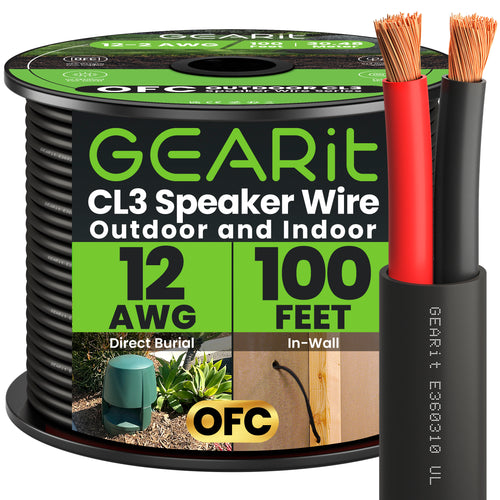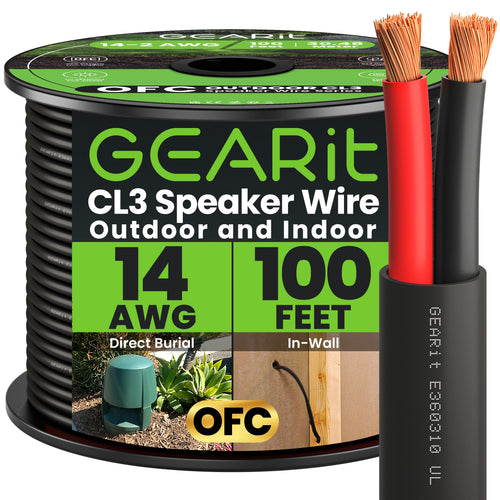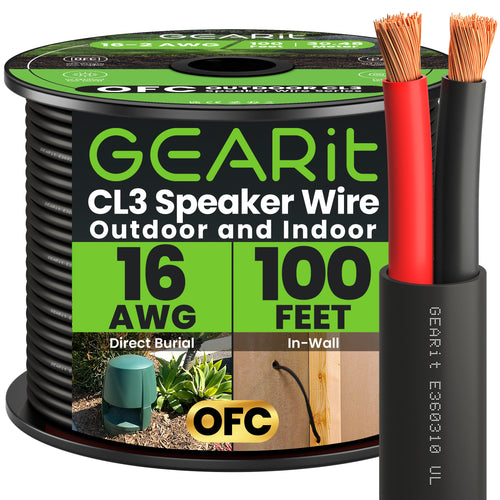
Outdoor speaker systems can transform your backyard or patio into a lively entertainment area. However, to ensure optimal sound quality and power delivery, choosing the correct gauge of speaker wire is crucial. This guide will help you understand wire gauge, why it matters, and how to calculate the appropriate gauge based on the length of the run and the power requirements of your speakers.
Understanding Wire Gauge
Wire gauge refers to the thickness of the wire, which affects its ability to carry electrical current. The American Wire Gauge (AWG) system is the standard used to denote wire sizes. In this system, lower numbers indicate thicker wires. For example, a 12 AWG wire is thicker than a 16 AWG wire.
Why Wire Gauge Matters
Factors Influencing Wire Gauge Selection
To determine the correct wire gauge for your outdoor speaker system, consider the following factors:
How to Calculate the Appropriate Gauge
Here’s a step-by-step method to calculate the correct wire gauge for your outdoor speaker system:
1. Measure the Length of the Wire Run
Determine the distance from your amplifier to each speaker. For outdoor installations, be sure to measure the actual path the wire will take, including any curves or obstacles.
2. Determine the Power Requirements
Check the power output of your amplifier (in watts) and the power handling capacity of your speakers. This information is usually found in the user manuals or on the manufacturers’ websites.
3. Consider the Impedance of Your Speakers
Most home speakers have an impedance of 4, 6, or 8 ohms. This value affects the current flow and resistance in the wire.
4. Use a Wire Gauge Chart
Wire gauge charts provide a guideline for choosing the appropriate wire gauge based on length and power. Here’s a simplified version:

5. Calculate Using the Formula
For more precise calculations, you can use the following formula to calculate the voltage drop and determine the wire gauge:

Ensure the voltage drop is within acceptable limits (usually less than 5% of the amplifier’s output voltage).
Example Calculation
Let’s say you have an outdoor speaker system with the following specifications:
● Amplifier Power Output: 100 watts per channel
● Speaker Impedance: 8 ohms
● Distance to Speakers: 50 feet
Using the simplified wire gauge chart:
For an 8-ohm speaker over a 50-foot run, 14 AWG wire is recommended. If you want to be more precise:
1. Calculate the Current: 
2. Assuming a typical amplifier voltage of 25V for an 8-ohm speaker:

3. Voltage Drop Calculation: Assuming 14 AWG has a resistance of 2.525 ohms per 1000 feet:

Since 1.01 volts is within the acceptable range (5% of 25V is 1.25V), 14 AWG wire is appropriate.
Choose Wisely!
Choosing the correct wire gauge for your outdoor speaker system is essential for maintaining sound quality and ensuring efficient power delivery. By considering the length of the wire run, power requirements, and speaker impedance, you can select the right wire gauge to optimize your audio experience. Use the provided charts and formulas as a guide, and enjoy your enhanced outdoor sound system with confidence.



























































